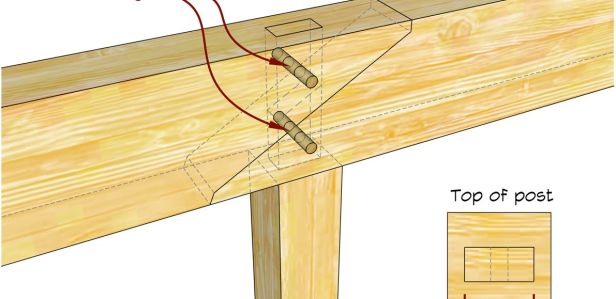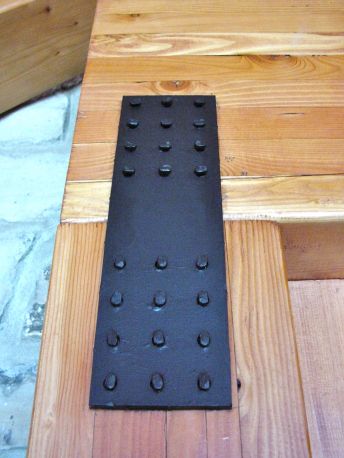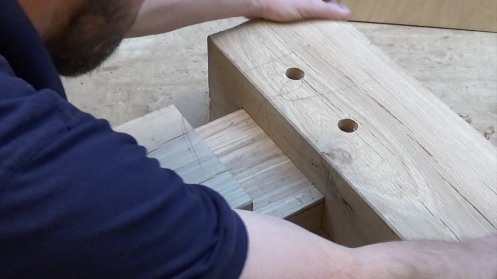Like any construction, Heavy Timber construction requires strong and efficient joints and connections. Such connections provide stability, strength, stiffness, and a continuous path for loads to travel down to the foundation. Wood is anisotropic as it has different strength depending on load orientations; longitudinal is strongest, tangential is weaker, and radial is the weakest. Woods structural strength is considered stronger when the connections utilize many fasteners (spreads load) and small fasteners are used (commonly less than 1/4″ diam). The following are the 2 major types of connections used in Heavy Timber and wood buildings/structures.
Mechanical Connections: Spread into 3 categories:
-doweled connections

-metal connector plates with integral teeth

-shear connections.
Proprietary connections are also available which utilize combinations of these.
Dowel type fasteners are arguably the most commonly used as they transfer loads well and are easy to install.

Nails are commonly used for light loads (residential and multi-family). Screws are also used, but most often in high-moisture conditions and ini high wind areas. Rivets are also used in conjunction with specially fabricated plates. Bolts are used but only up to 1″ diameters as any larger and localized stresses may split the wood. Pre-drilled holes for bolts are typically 1/16″ to 1/32″ larger than the bolt being used. Lag screws may be used when use of a nut isn’t possible or withdrawal resistance is desired.
Proprietary Connections are becoming very popular and consist of a unique connector design of bent or welded steel which provides hanger flange bearing and/or shear fasteners.

Joinery or ‘carpentry’ connections are also used by way of cutting notches, holes, and tongues providing interlocking capabilities.



These types of connections are geared towards compression and bearing rather than tension connections. Joinery is used fairly commonly in single story homes and construction, it is rarely utilized for more modern, multi-story buildings. They demand highly specialized skill and high labor costs in addition to their lack of tensile capabilities which makes them rarely used. Computer Numeric Controlled (CNC) technology has also become popular as well as the unique connection woodwork can be done accurately and efficiently with machines.

